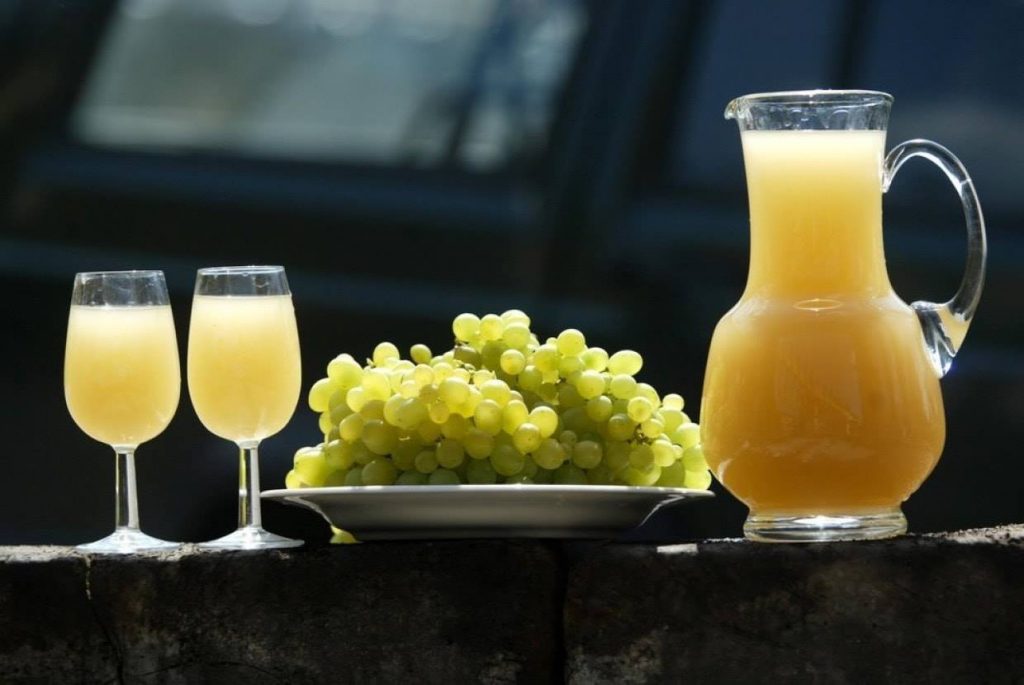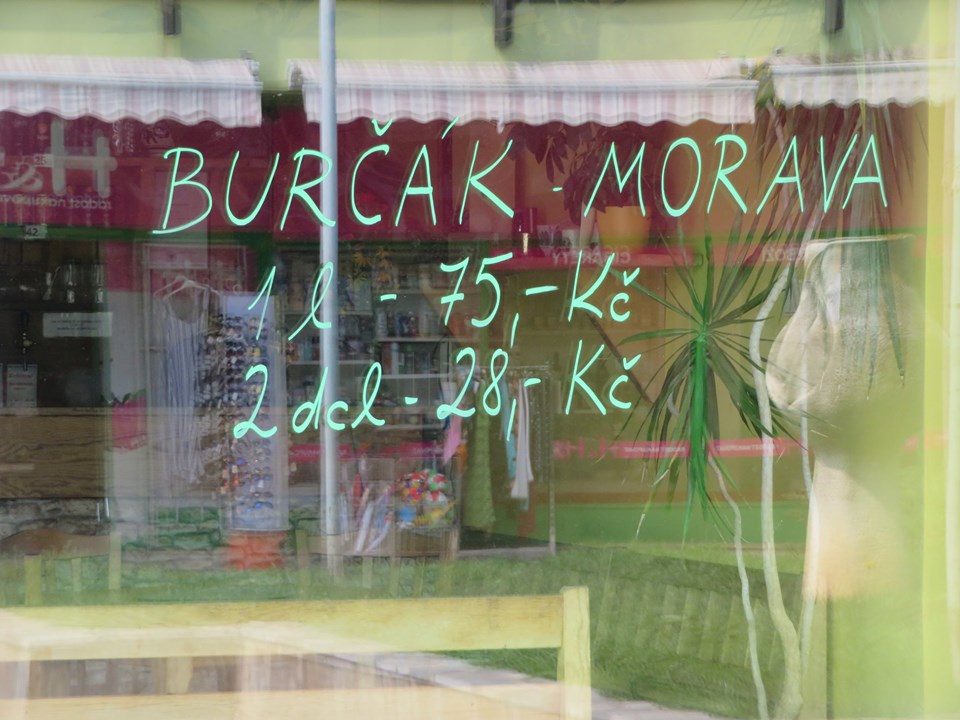Some towns mark the slow ending of summer by the return of migratory birds. In Prague, it is the first sighting of a hand-written shop sign saying “burčák,” and these have been popping up slowly since last week.
Partly fermenting the first pressing of grapes results in a cloudy beverage with about 4–6% alcohol. Burčák can be found in Prague at wine bars, farmers markets and local wine festivals. It is also a reason to take a trip to Moravia, as the biggest and best wine festivals are there.
The first burčák
of the 2019 season appeared in mid-August in Moravia, a bit later
than last year. It takes a week or so for the beverage to reach
Prague.
In 2018, due to exceptionally warm and dry conditions, it was available even before the end of July in Moravia, though legally it shouldn’t be sold before August 1.

More rain this year,
especially late in the season, has pushed back the grape harvest
since many fields are still wet.
Tabloid Blesk reports that the burčák quality is expected to be high. Just like with vintage wine, it varies from year to year. “The grapes are of good quality this year and there are plenty of them, so even burčák is good,” one Moravian vintner told Blesk.
Another vintner
interviewed by Novinky.cz cautioned that high demand and the later
harvest means some burčák is being sold rather early, with just the
minimum of alcohol content and a sweeter taste from more unconverted
sugar. This should change as more of the harvest gets under way.

It is known for, among other things, producing a terrible hangover. While folklore says this is because it continues to ferment in the drinker’s stomach, that is not true as the acid content of the stomach would kill the yeast. The hangover is due to the high volume chemicals related to incomplete alcohol production. Also, since it tastes like grape juice, people tend to drink a lot of it without realizing. This has led to excessive behavior among its drinkers.
Experts caution that
burčák should still have active carbon bubbles visible and even
audible, as the yeast should still be live. Burčák from white wine
should be golden yellow in color, and not brownish.
It should also be
stored in a chilled environment, and not out in the sun as heat
speeds the fermentation too much.
It is seldom sold in
stores since it requires special handling. If you buy some to take
home in a plastic bottle, you should remember to loosen the cap every
few hours to let the gas from fermentation escape.
Under Czech law,
aside from the August 1 release date, there are some other rules. It
must be made only from grapes harvested and processed in the Czech
Republic during the current calendar year. It cannot be diluted or
have added colors to mask poor quality. It cannot be sold after
November 1.
Information on the location of origin and producer has to be posted by the vendor. It must have at least 1 percent alcohol under the law, otherwise, it is simply grape juice.
Foreign products can be sold, but must be called something else, such as partially fermented grape must (částečně zkvašený hroznový mošt). It is known as burčiak in Slovkia, and Federweisser, Suser, Sauser, Neuer Süßer, Sturm or Junger Wein across German-speaking regions. It can also be found in France, Hungary, Albania, Romania and Georgia, among other countries with a wine tradition.
People who want the
first actual bottled wine of the season will have to wait for St
Martin’s Day on November 11, when the new vintage will go on sale
at 11 am. Many places including street festivals serve it with
roasted goose. St Martin’s Day in the Czech Republic in recent
years has largely overshadowed the release of beaujolais nouveau on
the third Thursday of November.












 Reading time: 3 minutes
Reading time: 3 minutes 


























